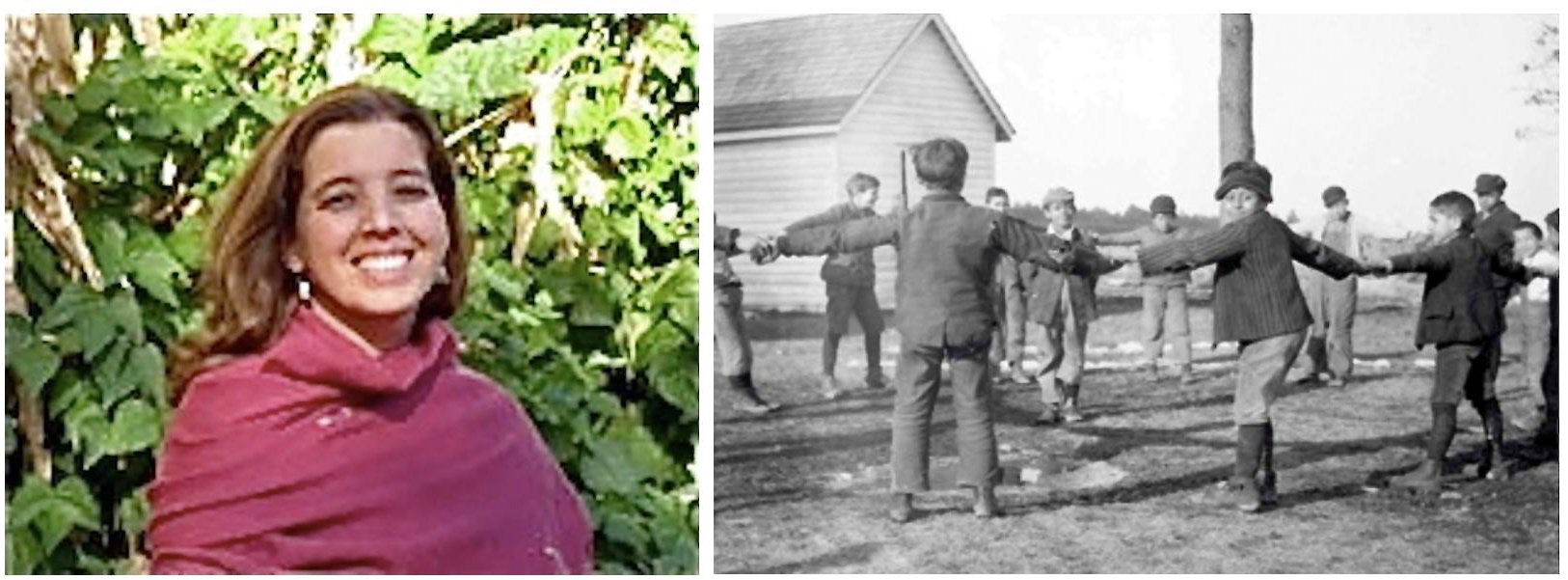Thursday, October 22, 2015 - 1:30pm to 3:00pm
Classroom 2 (near the Kress Street Entrance)
University of Pennsylvania Museum of Archaeology and Anthropology
3260 South Street
Philadelphia, Pennsylvania

(left) Dr. Gabrielle Tayac, Piscataway, National Museum of the American Indian, Washington, DC. (right) Nanticoke schoolboys playing "bear in ring" in Delaware, ca. 1911. Boy facing the camera is Roosevelt Perkins. Photo by Frank G. Speck (N01304).
Guest Speaker: Dr. Gabrielle Tayac (Piscataway)
Dr. Gabrielle Tayac, a member of the Piscataway Indian Nation, earned her Ph.D. and M.A. in Sociology from Harvard University, and her B.S. in Social Work and American Indian Studies from Cornell University. Her scholarly research focuses on American Indian identities, religious traditions, and social movements, maintaining a regional specialization in the Chesapeake Bay.
Gabrielle has served in staff and advisory capacities for numerous organizations including Amnesty International, Survival International, National Geographic, the Maryland Commission on Indian Affairs, the Accokeek Foundation, the National Park Service, and the Mid-Atlantic Regional Center for the Humanities. Most recently she was appointed by Maryland Governor Martin O’Malley to the Historic St. Mary’s Commission. Gabrielle is a member of the American Academy of Religion and the Native American and Indigenous Studies Association. She also works as a community advocate alongside Indigenous peoples from Latin America, especially with US-based members of the National Association of Indigenous Salvadorans (ANIS). On October 12, 1992, the 500th anniversary of Columbus’s landfall and as a co-founder of the hemispheric League of Indigenous Sovereign Nations, she was one of the organizers of the largest civil actions north of Mexico calling for indigenous rights at United Nations in New York City.
Since 1999, Gabrielle has been on staff at the Smithsonian National Museum of the American Indian. Her curatorial credits include the inaugural show, Our Lives: Contemporary Native American Life and Identity, Return to a Native Place: Algonquian Peoples of the Chesapeake, and IndiVisible: African-Native American Lives in the Americas. She is currently working on new permanent exhibitions for NMAI’s New York and Washington, D.C. venues. Most importantly, Gabrielle shares her life with her two children, Jansikwe and Sebastian Medina-Tayac, in Takoma Park, Maryland.
"Native Peoples of the Chesapeake: Indigeneity, Racism, and Reclamation"
Native peoples of the Chesapeake region are distinctive in their indigenous experience over time. Three major chiefdoms developed in relationship to the Tidewater lands and with other Native societies by the time of European contact: the Nanticoke, the Piscataway, and the Powhatan. Colonization unleashed disease, warfare, diaspora, and evangelization, patterns repeated across the continent. The Chesapeake, however, encountered a particular brand of attempted cultural erasure, with racist policies enduring for centuries. Maintaining their ancestral core of kinship and identity, Chesapeake peoples reorganized in the 19th and 20th centuries, continuing to reclaim their identities and practices in relevant ways to a global era.
Suggested Advance Reading:
Gabrielle Tayac, Edward Schupman, Genevieve Simermeyer, eds. 2006. We Have a Story to Tell: Native Peoples of the Chesapeake Region. Washington, DC: Education Office, National Museum of the American Indian, Smithsonian Institution.
Anne Hoffman. June 5 and 26, 2015. “History Matters: Delaware’s Forgotten Folks.” Delaware Public Media. WDDE 91.1 Dover, WMPH 91.7 Wilmington, Delaware.
Sponsored by the Native American & Indigenous Studies Initiative at Penn.

 Native American & Indigenous Studies at Penn
Native American & Indigenous Studies at Penn